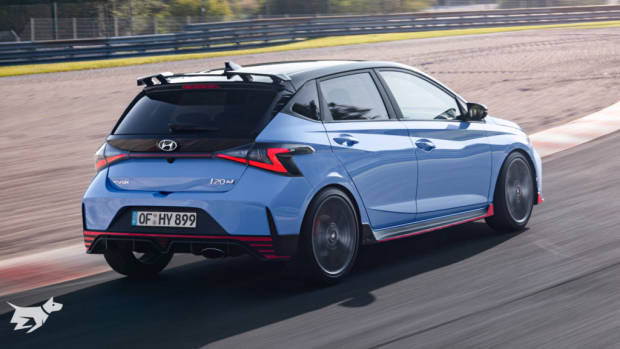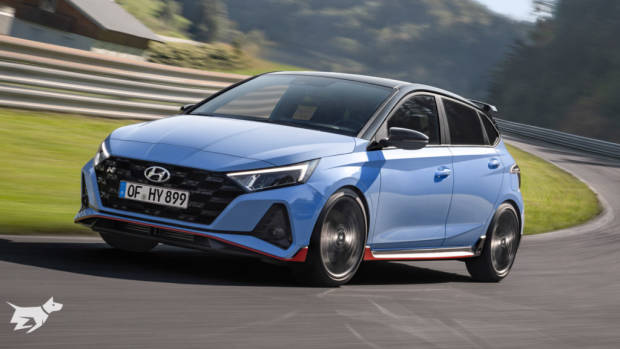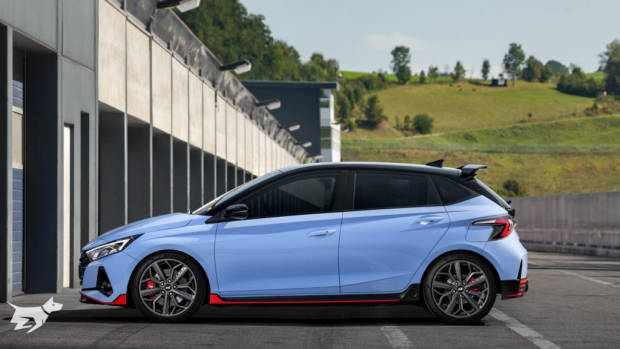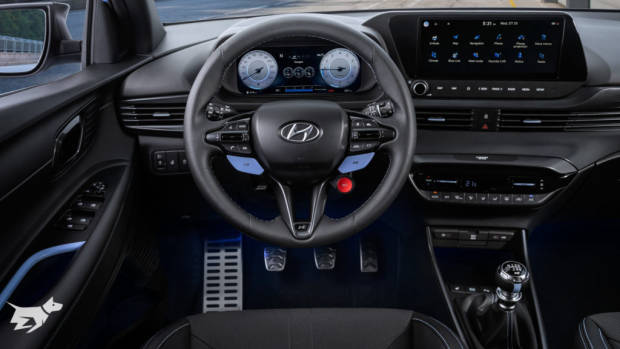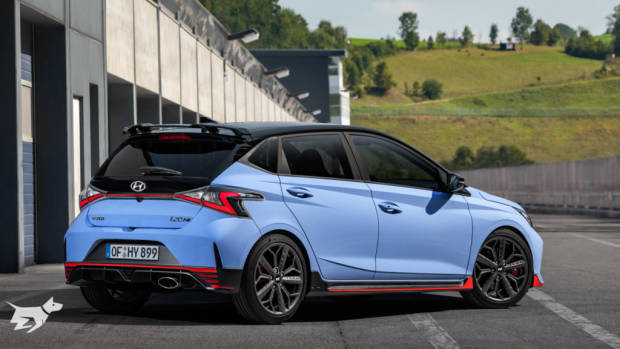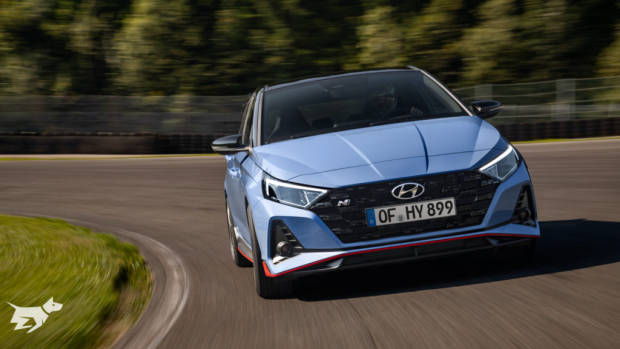-
Car Reviews
- Car News
-
Car Comparisons
Latest comparisons
- Chasing Deals
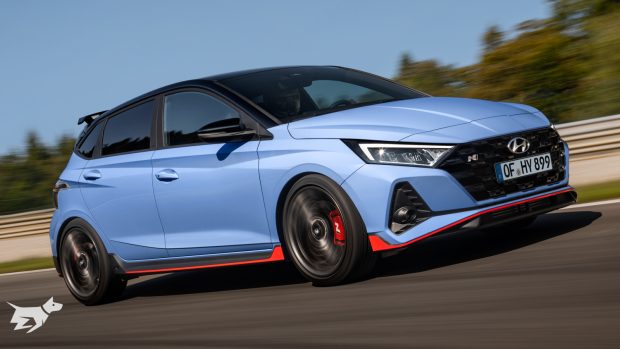
Hot on the heels of our first drive review of the Hyundai i20 N at Wakefield Park earlier this month in a camouflaged development vehicle, the Korean manufacturer this morning revealed the production version of this hard-charging light hot hatch that will come to Australia in the first half of 2021.
Producing 150kW of power and 275Nm of torque from a turbocharged 1.6-litre four-cylinder petrol engine, the i20 N has the Ford Fiesta ST (147kW/290Nm) and Volkswagen Polo GTI (147kW/320Nm) firmly in its sights.
Those outputs place the i20 N in the heart of the light hot hatch segment, though the similarly-sized but higher-powered Toyota GR Yaris – which makes 200kW/370Nm – will be something of a ‘stretch target’ in this class. We expect the i20 N to be priced at about $35,000 plus on-road costs when it arrives in Australia – or about $6,000 cheaper than its larger sibling, the popular i30 N that will be updated with 206kW early next year.
Like the Fiesta ST, the i20 N will be offered exclusively with a manual gearbox. Like the i30 N, the six-speed stick-shift used here will be fitted with switchable rev matching.
A mechanical limited slip differential will be ‘available’ overseas but is likely to be fitted as standard to the Australian-specification Hyundai i20 N. The vehicle driven by Chasing Cars on track recently was fitted with the hard-working LSD, coined the ‘N Corner Carving Differential’ by Hyundai boffins.
The direct injected 1.6-litre is an upgraded version of a common engine within the Hyundai Group – though it has been fitted with continuously variable valve duration to aid fuel economy. That said, performance is the name of the game, with the unit serving up a claimed 0-100km/h sprint time of 6.7 seconds – equalling Volkswagen’s two-litre Polo GTI but trailing Ford’s claimed Fiesta ST sprint by 0.2 sec.
Outside, the i20 N’s links to Hyundai’s current i20 N WRC rally competition vehicle are clear, with more angular and extroverted styling than the i30 N. Full of creases and sharp edges, the i20 N has a more distinct performance look than the Polo or Fiesta, but stops short of the pumped up and muscular GR Yaris that launches in Australia next month.
Six colours will be available, led by the N Performance brand’s signature ‘Performance Blue’ hue – though a deeper blue will be offered, along with white, silver, black and brass, with most colours optionally matchable to a black roof.
Inside, the i20 N sports a more modern cabin treatment than its i30 N sibling, with dual digital displays incorporating virtual gauges with different aesthetics for each of the drive modes. We found the seats to be comfortable and supportive, while the steering wheel and shifter are essentially lifted from the larger Hyundai hot hatch.
The standard i20 is a light hatch available overseas but is not sold locally. Hyundai’s N division has conducted a thorough rework of the regular i20’s steering and suspension, with considerable structural reinforcement along with a new anti-roll bar, springs and shock absorbers. The rear suspension is a dual-coupled torsion beam designed to provide better stiffness than standard, while the steering ratio has been reduced from 12.4:1 to 12:1.
Weight is a claimed 1,190kg. The test vehicle Chasing Cars drove recently weighed 1,229kg with a partial tank of fuel. That is considerably lighter than the i30 N, which weighs 1,509kg in hatchback form. The power to weight ratio of the i20 N sits at 126kW/tonne, not far off that of the i30 N at 133kW/tonne.
The i20 N is also fitted with a considerable package of safety features as standard in a move designed to meet European five-star requirements. Inclusions take in AEB with car, cyclist and pedestrian detection, along with lane keeping assistance, blind spot monitoring, driver attention monitoring, rear cross traffic alert, and auto high beam.
No mention is made of a centre airbag or junction AEB functionality – both of which are requirements for an Australian ANCAP five-star safety rating.
Chasing Cars will drive a production version of the i20 N closer to the launch date of this hot hatch, currently slated for the first half of 2021.
Latest news
About Chasing cars
Chasing Cars reviews are 100% independent.
Because we are powered by Budget Direct Insurance, we don’t receive advertising or sales revenue from car manufacturers.
We’re truly independent – giving you Australia’s best car reviews.
